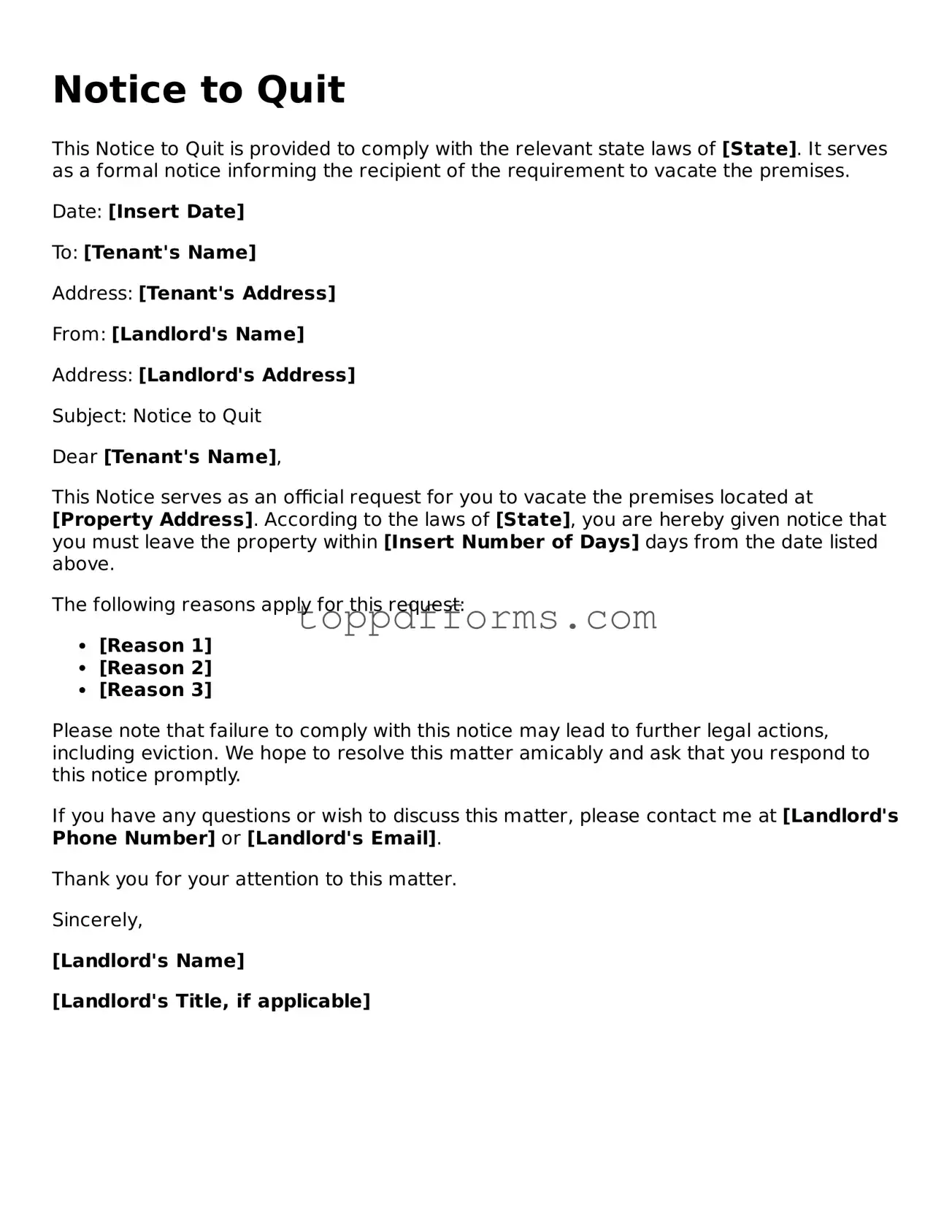What is a Notice to Quit form?
A Notice to Quit form is a legal document that a landlord uses to inform a tenant that they must vacate the rental property. This notice is often the first step in the eviction process and typically outlines the reason for the eviction, such as non-payment of rent or lease violations. It serves as a formal request for the tenant to leave the premises by a specified date.
When should a landlord issue a Notice to Quit?
A landlord should issue a Notice to Quit when a tenant fails to comply with the terms of the lease. Common reasons include not paying rent on time, causing significant damage to the property, or engaging in illegal activities. The timing of the notice can depend on state laws, which may require a specific notice period before taking further legal action.
What information should be included in a Notice to Quit?
The Notice to Quit should include essential details such as the tenant's name, the address of the rental property, the reason for the eviction, and the date by which the tenant must vacate. It is also important to specify any applicable state laws or lease terms that justify the eviction. Clear and concise language helps ensure the tenant understands the situation.
How does a tenant respond to a Notice to Quit?
Upon receiving a Notice to Quit, a tenant has several options. They can choose to comply and vacate the property by the specified date. Alternatively, they may wish to address the issues raised in the notice, such as paying overdue rent or resolving lease violations. If the tenant believes the notice is unjust, they can seek legal advice and may choose to contest the eviction in court.
What happens if a tenant does not leave by the deadline?
If a tenant does not vacate the property by the deadline stated in the Notice to Quit, the landlord may proceed with the eviction process. This typically involves filing an eviction lawsuit in the local court. The court will then schedule a hearing where both parties can present their cases. If the landlord prevails, the court may issue an order for the tenant to be removed from the property.
Can a tenant challenge a Notice to Quit?
Yes, a tenant can challenge a Notice to Quit if they believe it is invalid or if they have resolved the issues cited in the notice. Tenants may argue that the landlord did not follow proper procedures or that the reasons for eviction are unfounded. Seeking legal counsel can help tenants understand their rights and navigate the process effectively.
